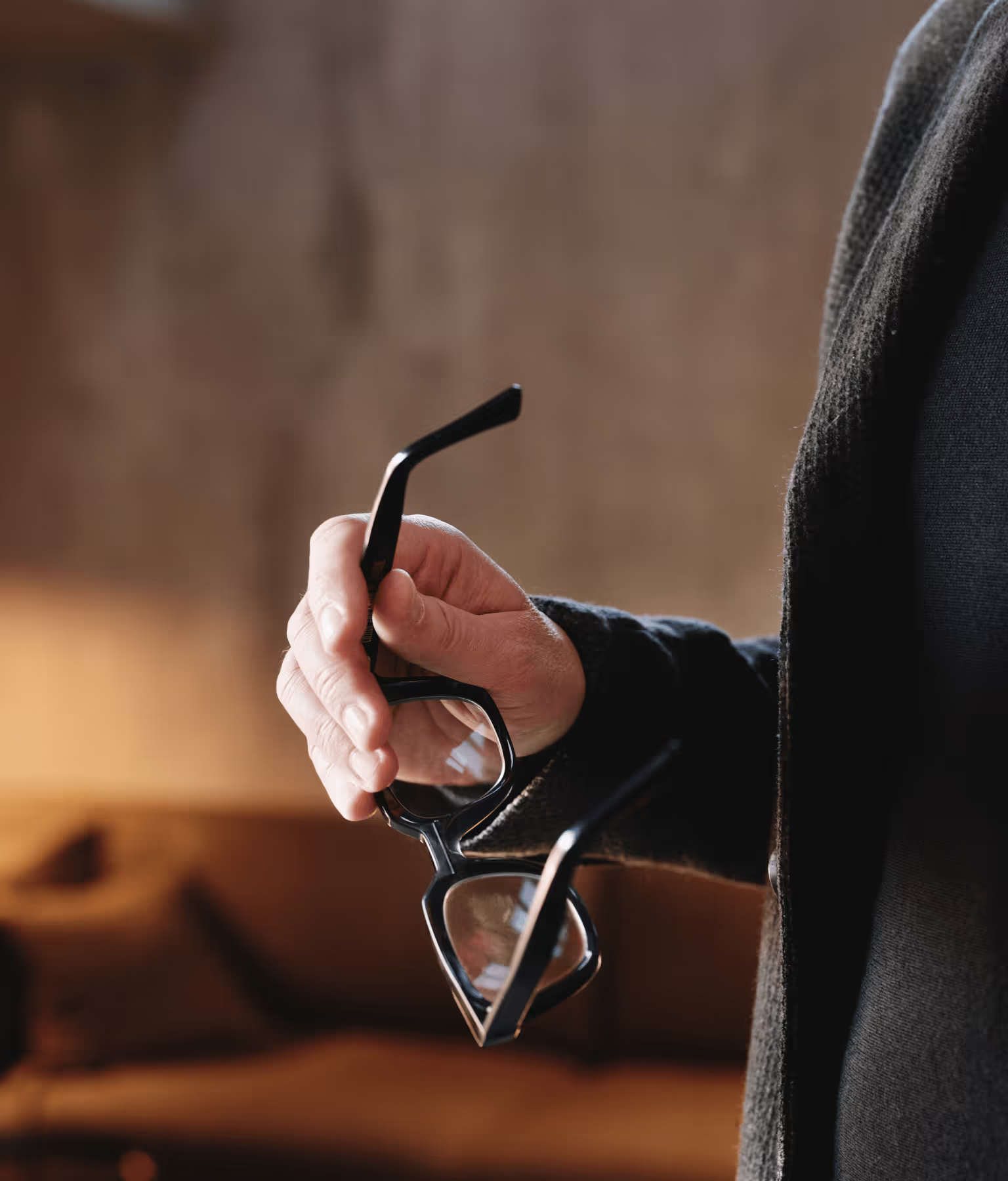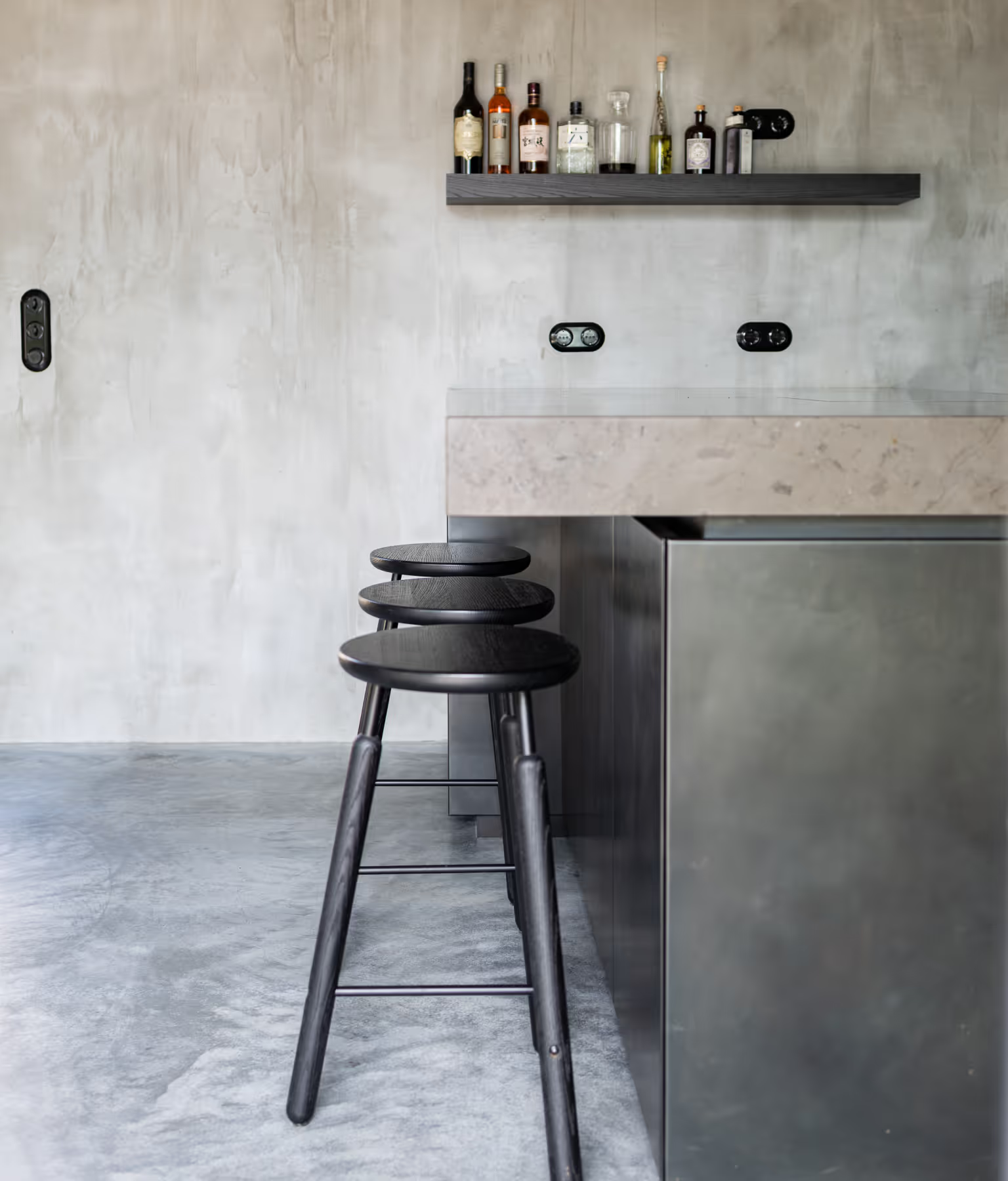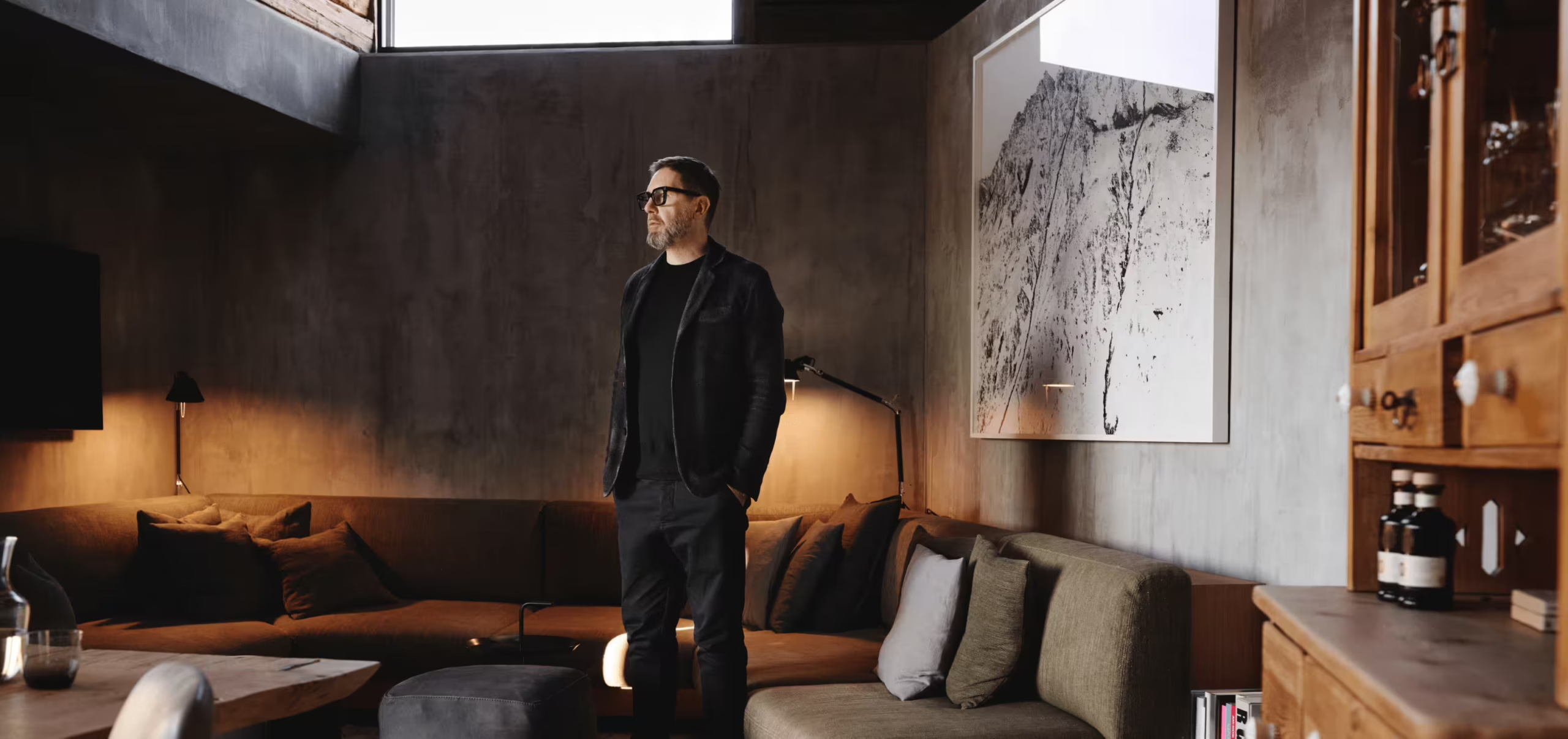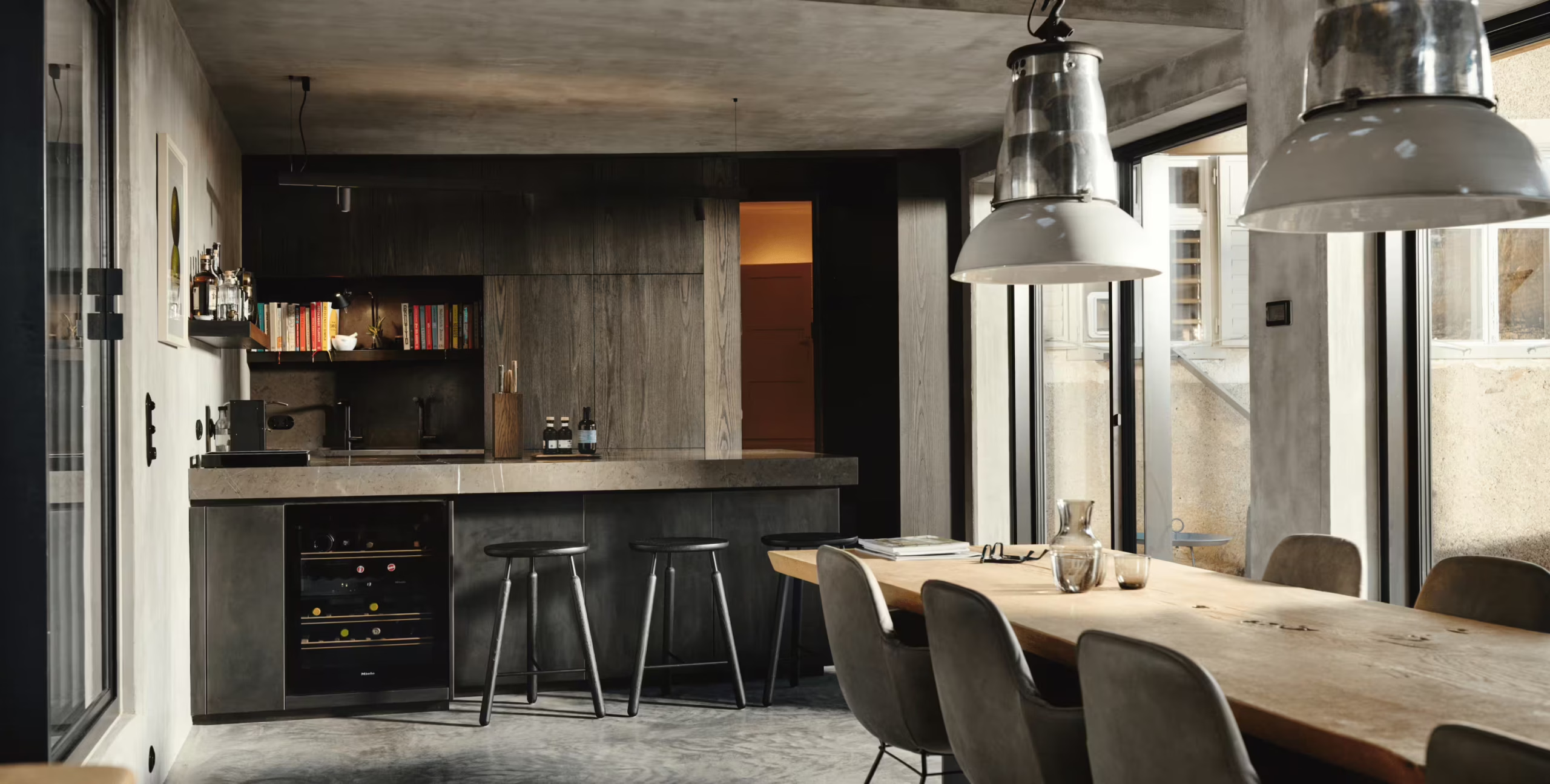Art of Pioneering
Mr. Herbst and a sense of self-evident
Malek Herbst Architects developed a unique kitchen for Josef Göbel.
Founding partnerGeorg Herbst discusses the thinking behind living
spaces, the importance oftimelessness, and why good architecture
needs to be taken for granted.
Founding partnerGeorg Herbst discusses the thinking behind living
spaces, the importance oftimelessness, and why good architecture
needs to be taken for granted.
Photo Credits: Schaller Lukas, Müllner Monika
Mr. Herbst, how do you reinvent a kitchen?
Georg Herbst
Our idea was to design the kitchen as a modular system that’s flexible in its basic structure and dimensions. The fundamental structure allows it to be implemented in different qualities and sizes, depending on someone’s needs and circumstances. And if you move to a new home, for example, you can simply take it with you and easily adapt it to the new living situation. The components of the frame can be easily swapped out. For instance, the surfaces can be replaced if you want something new at some point.
So, it is a kitchen that accompanies you for a lifetime?
Georg Herbst
You could even turn it into a shelf if you no longer need it as a kitchen. But most of the time, it will remain a kitchen. It is timeless. It will never go out of style.
Is this something architects come up with because they think in terms of living spaces,not just selling kitchens?
Georg Herbst
We think in terms of life situations and living spaces, that is true. But I also think about how I want it, how I would enjoy it. And then I assume others would like it too. This type of kitchen has not been thought of before. With Josef Göbel, we have a partner who can bring this idea to life with craftsmanship. That is why we went in this direction.
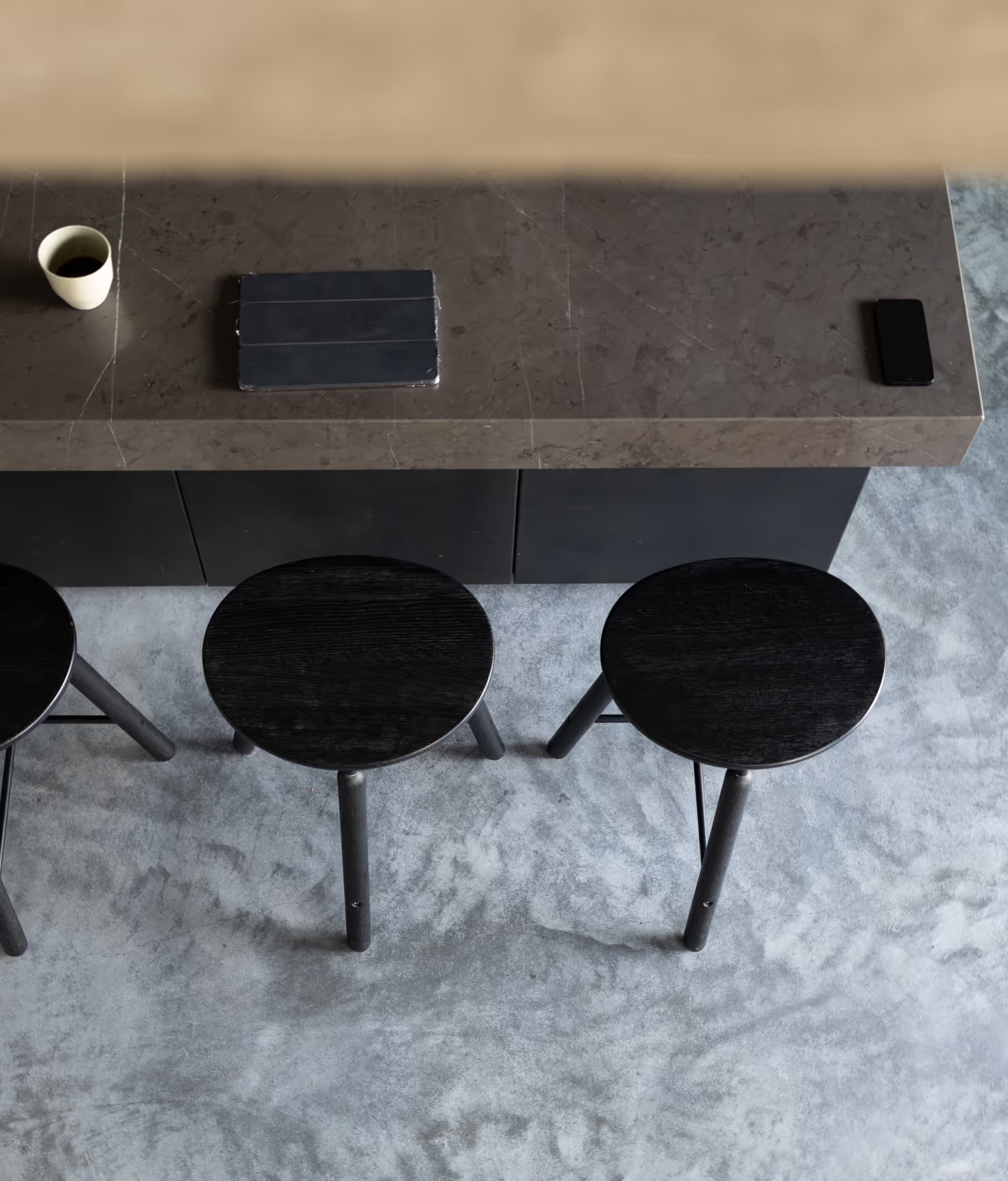
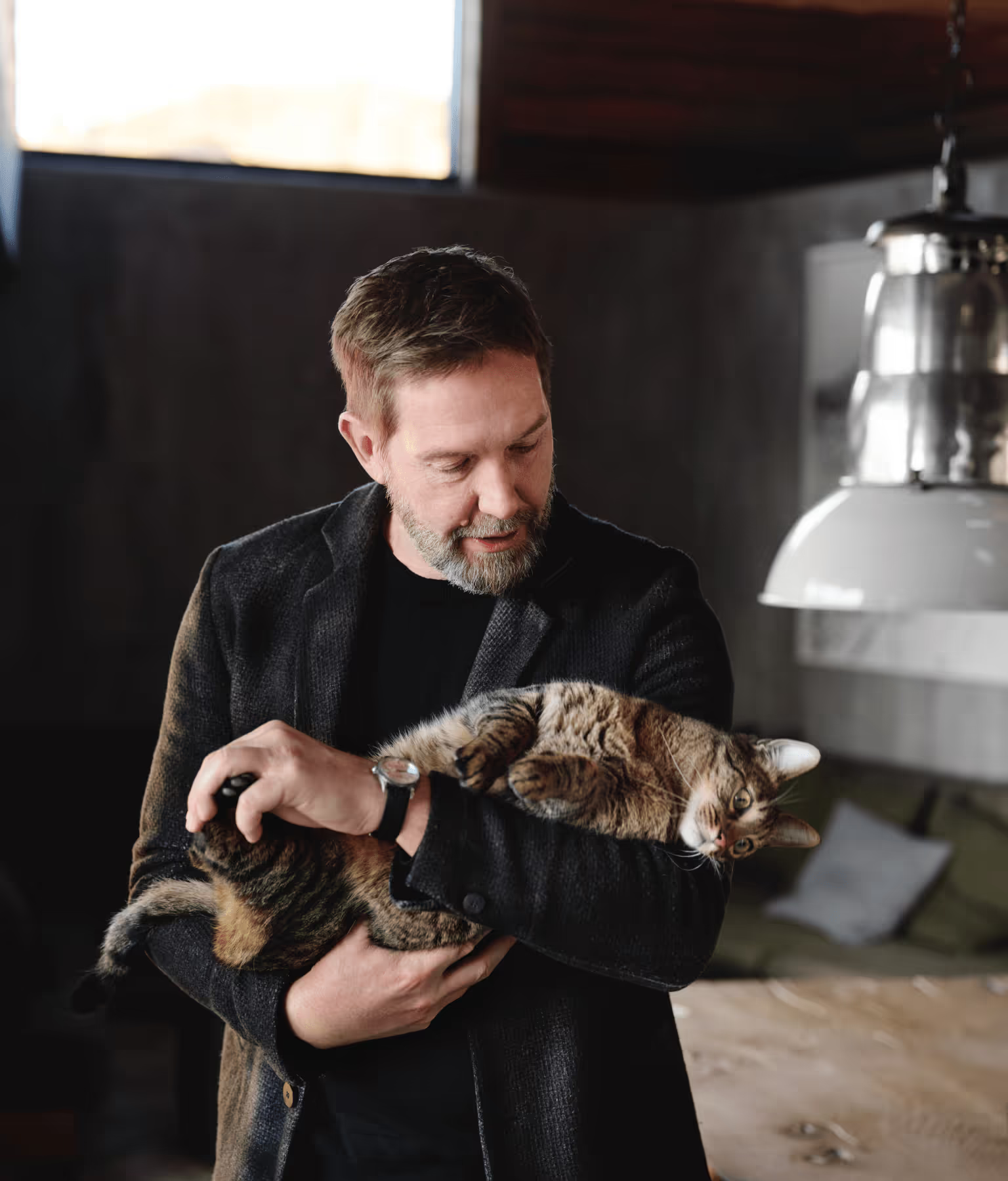
„The greatest art is to make something seem sonatural that it feels
like it could never have been any other way.”
like it could never have been any other way.”
Georg Herbst
Architect
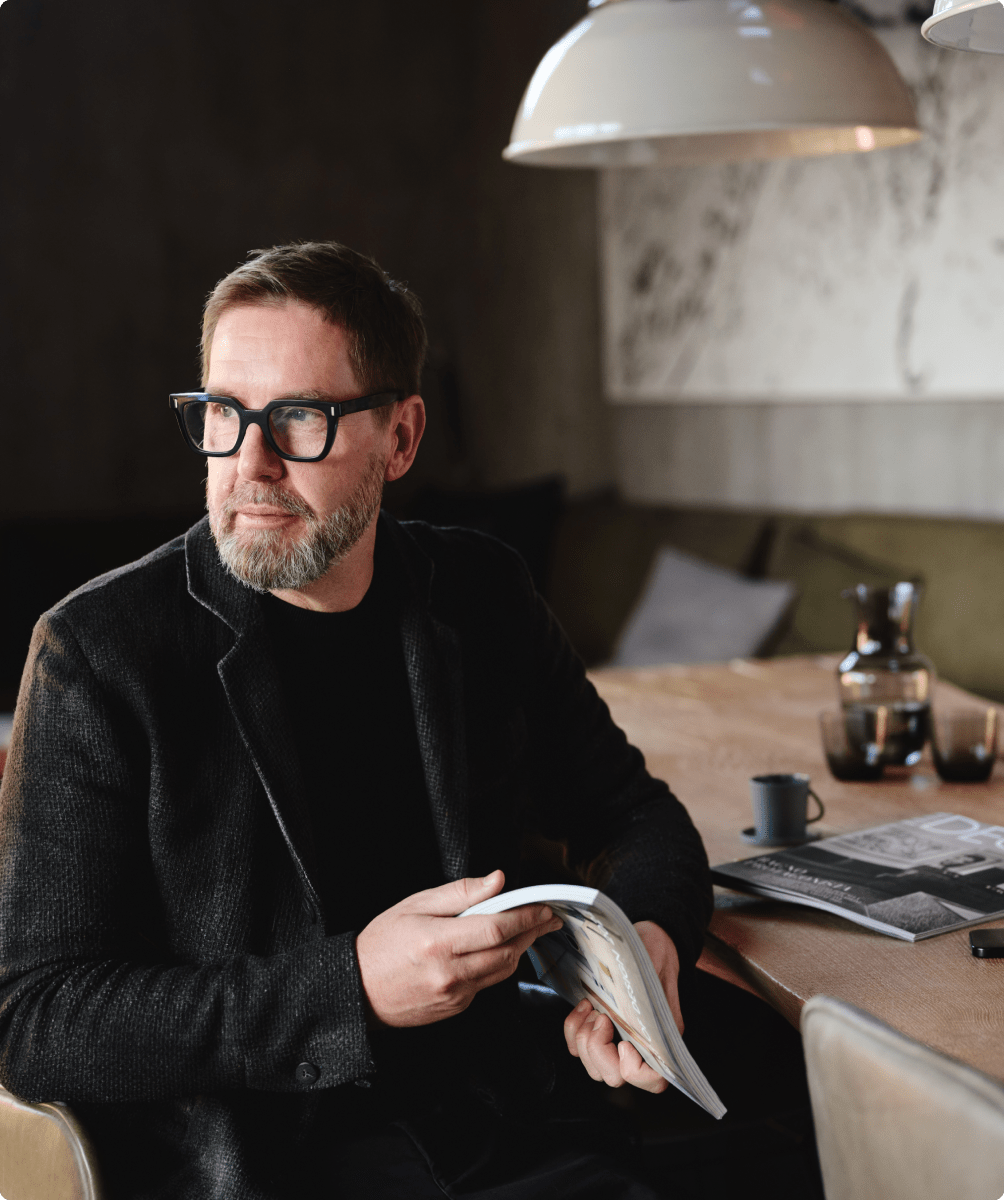
When we look beyond the kitchen to the entire house: In Fladnitz, you revitalized an award-winning single-family house where a lot of wood was used...
Georg Herbst
Fundamentally, we spend a lot of time considering materials, just like with the kitchen. We used many materials that already existed in the old building and replaced others. The entire base is made of exposed concrete, which was originally brickwork. But it could not be preserved, especially for structural reasons. So we chose a new interpretation that still has a sense of naturalness. The house dates back to 1780, and I had to counter what was used back then with something of similar quality.
Is self-evident a key quality factor for architecture in general?
Georg Herbst
For us, yes. I always say the greatest compliment we can receive from a client is:" Actually, I imagined it just like this." Then we have hit the mark. Our goal is to create that. But I do not understand naturalness as sameness. It shouldn’t seem forced. And when the creative drive is so high that it then ends in a design that you have to explain for a long time, then it is not self-evident.
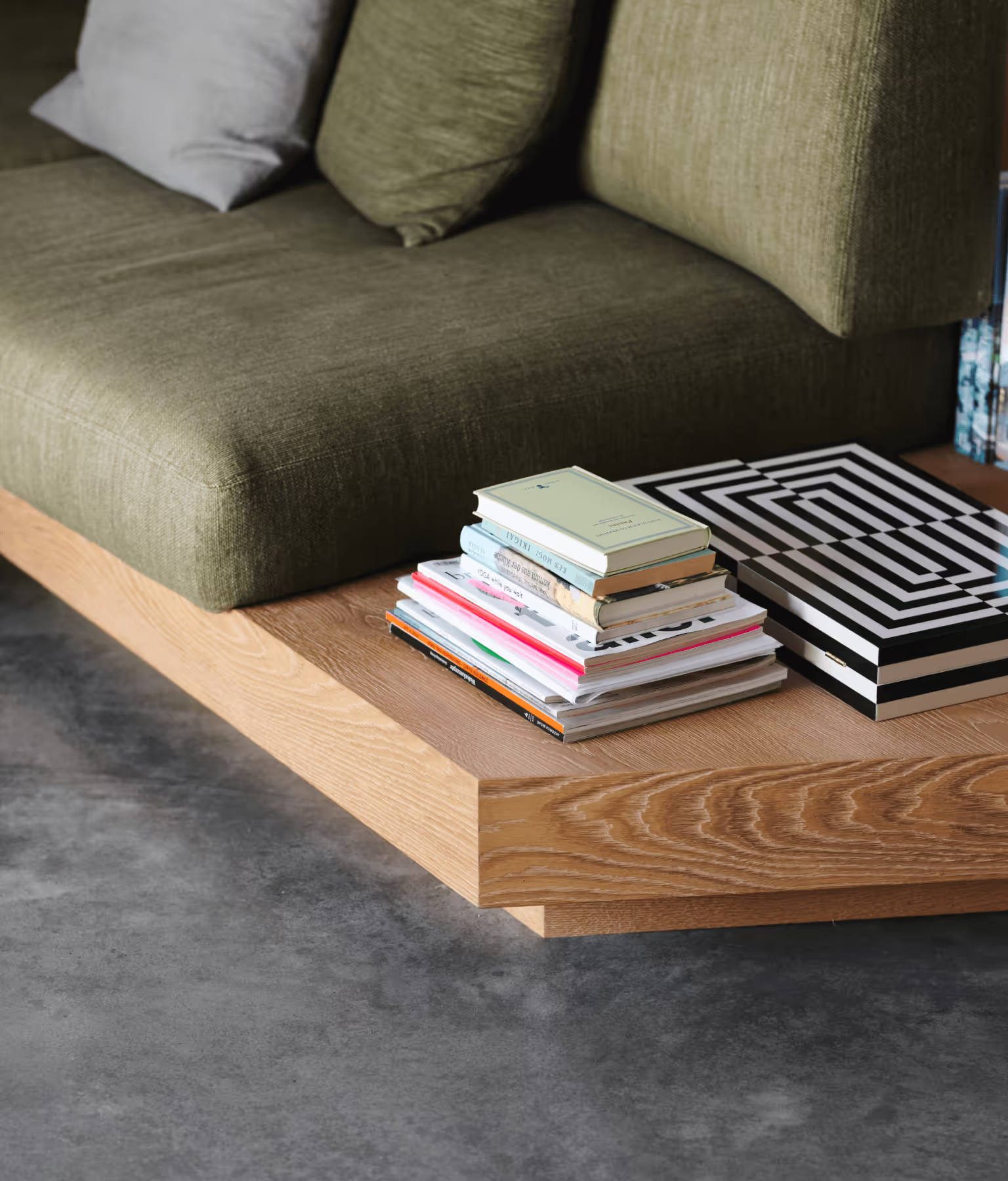

What does self-evident need in order to succeed?
Georg Herbst
We worked with the materiality of the existing building and deliberately created contrast. We look for materials that fit, but we use them in a different design language. And it has to be crafted to such a high standard that it doesn’t seem forced, that it’s timeless and can stand alongside the old parts we reused. Even though everything in the house is new, when you drive by, you should feel like it has always been that way. That’s incredibly difficult to achieve. And it needs to be carried through in interior design as well. It requires high-quality execution. If I were to put an Ikea kitchen in there, for example,I could not create that effect. What is “made to measure,” specifically designed for that space, is necessary. It can’t be anything else.
How important is it to you that the things you design are timeless?
Georg Herbst
Very important. We don’t design or build anything that is "modern" in the sense of following a trend. We use materials that improve over time, that can develop a patina. What we do should last for several decades and still be appealing. This house in Fladnitz has been standing for over 200 years. It would be wonderful if, in 100 years, people still look at it and say: “It works, it’s good, and it’s aesthetically pleasing.” For that, you need simple, clear lines.
